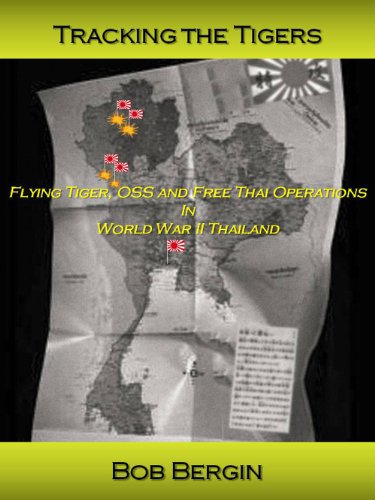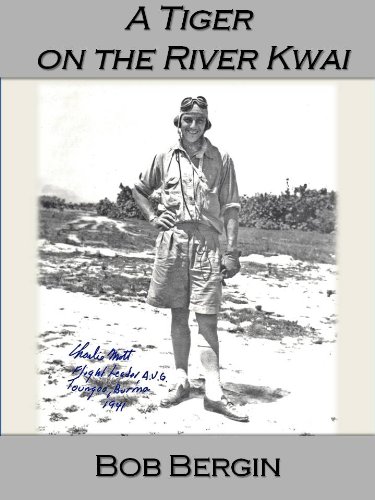The forebearers of the British MI-5 and the US CIA were formed during World War II as the SOE and the OSS.
https://en.wikipedia.org/wiki/Special_Operations_Executive
https://en.wikipedia.org/wiki/Office_of_Strategic_Services
http://www.insigne.org/OSS_main-0.htm
The exploits of these two organizations are well known and recounted in a myriad of documentaries and fictional accounts. Even Ian Fleming’s character of James Bond is said to have been based on real-life agents. “Fleming based his fictional creation on a number of individuals he came across during his time in the Naval Intelligence Division and 30 Assault Unit during the Second World War, admitting that Bond was a compound of all the secret agents and commando types he met during the war. Among those types were his brother, Peter, as well as a number of others.”
Within the European Theater, these organizations played a very active role with direct interventions and by supporting the resistance forces in every occupied country. In Asia, and particularly in the Thai region, they played a more passive role. In late 1944, as the tide of war was turning against the Axis Powers, concerns were raised at the highest levels of the Allied Commands over the safety of the tens of thousands of POWs that the Axis held. This was particularly true of those held by the Japanese. Although the full extent of the atrocities and deprivation inflicted on the Allied POWs in SEA and China was not yet known, word had leaked of some of the worst events. As concentration and POW camps in Europe were liberated by the Allied Armies, concerns grew over the status and safety of the IJA POWs.
One story that is oft repeated but without specifics is that in mid-AUG 1945, as the Japanese announced their surrender, dozens if not hundreds of Allied personnel appeared seemingly out of nowhere to fill the void left by the Japanese authorities. They were there to formally accept the surrender of the various IJA units and to assume oversight for the IJA soldiers who were now themselves EPWs (= Enemy Prisoners of War the term used so as to distinguish them from the term POW used to denoted Allied military members who were taken as prisoners).
The arrangement that the Thai government had with the Japanese was in many ways parallel to that of Vichy France. Half or more of the country was still being administered by Thais largely without interference by the Japanese. This presented the Allies armies with a unique situation. They could parachute in teams of agents with relative impunity. It was even possible to have weapons and supplies, as well as personnel landed by transport aircraft. In addition, the Thai government lent its full support to the Allied effort. Its ‘alliance’ with the Axis Powers was purely out of self-interest and self-preservation rather than ideological agreement. Many Thais who found themselves out of the country when the war spread to their homeland volunteered to form a resistance group known as the Seri Thai (Free Thai).
https://en.wikipedia.org/wiki/Free_Thai_Movement
[ also see Section 9.15 of this above for the story of Khun BoonPong ]
Ray Withnall in his book UBON: The Last Camp Before Freedom relates in depth the operations of OSS and SOE agents in the Ubon and Issan area and on into the border areas of French-Indo China in what would become Laos.
The most detailed description of such activity in the area of the Thai-Burma Railway is provided by John Coast in his survivor account: Railroad of Death.
The two men he describes were seemingly US Army paratroopers rather than ‘secret agents’. These two had seemingly arrived in Thailand in the early months of 1945. It is possible, although not documented, that they arrived via a transport plane that landed at the dirt airstrip that the Thai military maintained at Lat Ya, just a few kilometers west of the Kanchanaburi POW camps. Their mission was two-fold: 1) to provide an overwatch on the Kanchanaburi area camps to look for indications that the IJA was preparing to execute the POWs; 2) to establish a training base for Seri Thai forces in the area. Expat Thai students and businessmen who were in the USA were trained as trainers (cadre) to recruit and organize Seri Thai units. According to British Lt. John Coast, there was a large training camp deep in the jungle a few hours travel north of Kanchanaburi. Coast himself describes how the POWs were forced to dig deep ‘drainage ditches’ around the various compounds that made up the Kanchanaburi area camps. These were thinly disguised mass graves! In a few places, machine guns had been positioned at the corners of some of these compounds.
Another worrisome move was being made by the Japanese in the summer months of 1945. The officers were being separated into first separate compounds then transported to newly established camps. One of the largest was at Nakorn Nayok, northeast of Bangkok. Many of the better known Allied officers including LTCs Philip Toosey and Blucher Tharp were sent to that camp.
This is not meant to be a treatise on the ‘special operators’ but rather a portion of the story of the US POWs. But these storylines overlap in a few places. One of the sub-compounds in the Kanchanaburi area was the railroad depot at Khao Din a few Kms east of the walled city. Survivor accounts relate two pertinent interactions between the POWs and the two paratroopers at Kanchanaburi.
The Japanese had installed an anti-aircraft gun emplacement on one of the hills overlooking this depot. One POW had just delivered supplies to that gun crew when as he descended the trail he spotted movement in the bushes. There he spotted two men in camouflage. They motioned for him to be silent and simply continue on his descent. He never mentioned that encounter to anyone until after liberation.
In hindsight, this was clear indication that these two soldiers were keeping a close eye on the movements at the various camps in the area. There is also mention that they were planning a ‘liberation raid’ by the Seri Thai on the KAN-area camps, scheduled for late SEP 1945. By that point in the war, the Japanese had been defeated in Burma and were withdrawing troops into Thailand – using the TBR. There is no documentation of combat troops in the immediate area but there were now thousands in Thailand. The Japanese troops in the KAN area were three-fold: IJA camp cadre and their Korean guard subordinates, Railway Engineer units and other IJA support personnel of all types (logistical, medical, administration, etc). These numbered, at a maximum, 5000 men. Since the various compounds in the KAN area held the maximum number of Allied POWs they would have been the focus of any such raid. But it is speculated that the smaller camp at Nong Pladuk may have been included in the raid planning.
One can only speculate on the possibility of success of such a raid and what the IJA response might have been. Surely combat troops would have been ordered to quell such a bold move! Unlike the US Ranger’s raid on the Los Banos POW camp on Luzon, there was no established Allied-held line to evacuate the now liberated POWs to. Would such a raid have been a short-lived reprieve from execution only to be followed by a counter-attack by seasoned (and demoralized) IJA troops looking for revenge for their defeat in Burma? I believe that we can allow this idea to rest in peace that it was not, in fact, ever executed!
There is one other OSS-related side story to be told. The POW camp near the city of Petchburi was also located next to a mountain. There were two OSS agents operating in that area as well. A small group of US POWs had been sent to that camp that housed 2000-2500 POWs who were tasked with building an airstrip. Two of those POWs were survivors of the USS HOUSTON. They were contacted by members of the Seri Thai posing as farmers. Messages were exchanged and the Thais eventually assisted these two POWs to escape and led them to the OSS agents. For the next few weeks, those two assisted the agents in defining the composition and numbers of Allied POWs at the camp. Fortunately. The war ended before any ‘action’ was taken in the Petchburi area.
Part 2 The Seri Thai
Although it was not employed in any significant military action, the resistance organization known as the Seri Thai (Free Thai) is considered to be one of the more successful overall efforts within Thailand during this era. It was an amalgam of at least five major pieces that had to mesh together perfectly for it to succeed and not get everyone involved executed.
It was apparently the brain-child of 1932 coup leader Pridi Phanomyong. It was supported by other highly placed officials in the Thai government of the era. First among these was the Prime Minister. Phibun Songkhram. Although for security reasons he did not play an active role, he facilitated the operations in many ways by simply ignoring its existence. Foremost among these was to relieve Pridi of his duties as Finance Minister — ostensibly over ‘political differences’ and appointing him as Regent for the young King Rama VIII. This allowed Pridi the time and access to diplomatic personnel as a cover. Also complicit in this effort were the Ambassadors to the USA and Japan. Via diplomatic channels they provided vital intelligence to the operators.
https://en.wikipedia.org/wiki/Pridi_Banomyong
Another player on the European diplomatic side was Mani Sanasen, the son of the Thai AMB in London, who himself had diplomatic ‘cover’ as a delegate to the League of Nations. On the operational side for training of Thai agents in England, there was Prince Supha who was exiled to England following the 1932 fall of the monarchy due to his ardent support of the royalist faction. Overall, while there was perhaps a larger pool of Thais in England (mainly students), the simple fact that the UK and Thailand were technically at war (unlike his US counterpart, the London-based AMB had delivered the declaration of war) kept the training of Thais by the SOE at a much lower level and priority than in the US. It is said that Prince Supha was the only Thai that the British military establishment had any respect for or trust in. For a variety of reasons, the Thai candidates for special training did not mesh well with Prince Supha and it wasn’t until Sena Tanbunyum emerged as the de facto leader that serious training efforts got underway.
It was these ‘operators’ who comprised the other three main elements of this organization. First there were the native Thais who established bases across the countryside for training and planning. Thousands of young men melted into the jungles to provide the resistance force. They were trained by the remaining two elements: British and American military and para-military (SOE & OSS) and Thais who had been out of the country as students or businessmen who were trained in the US or England as trainers for their countrymen. These latter two groups were infiltrated into Thailand mainly by parachute, but a few came overland and some were landed directly into jungle airstrips with supplies, weapons and even vehicles.
Finally (part #5) after Phibun’s departure as PM in the summer of 1944, the Thai military itself played a much bigger role in supporting Seri Thai operations.
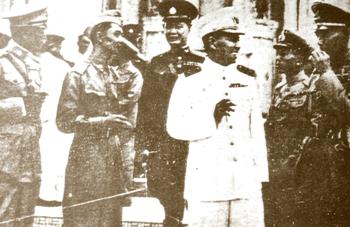
Seni’s actions in WASH DC paved the way for a much more cordial and cooperative relationship between the OSS and the Thais who volunteered to be trained as trainers. There was, however, a bit of double dealing intrigue in that Phibun did not completely trust Seni who was more allied with rival Pridi than himself. As a safe guard, Phibum assigned a Col. Khap to ‘watch over’ Seni’s activities in WASHDC.
Under the auspices of COL Goodfellow some 40 Thai men were recruited and trained in the US as cadre for return to assist in the training of the Seri Thai organization. [editor’s note: Haseman provides the figure of 37 Thai cadre that came from the UK-based training (pg 44).]
One of the first actions of the OSS was to establish Thai language radio broadcasts out of San Francisco. Although the ability of anyone inside Thailand to receive such broadcasts was rather limited, they did seemingly convey the message that the Allies supported the efforts of the burgeoning Seri Thai movement and aided recruitment efforts. For the first years of existence of the Seri Thai, this moral support was about all that could be offered. It was still impossible to provide any weapons or other supplies.
Once the first Thai cadre were ready to deploy back to Thailand, a series of ‘obstacles’ were encountered. First among these was Command and Control and who exactly would receive and benefit from any intelligence they might gather. British Intelligence Units for SEA were based primarily Ceylon and India. Operational areas with Thailand overseen by the British SOE and the US OSS also needed to be sorted out to avoid duplication or even conflict. The SOE-trained Thais were eventually split into 14 who remained in India and 23 who reentered Thailand under the operational code as Force 136. Their India-based members called themselves the White Elephants. Due to a differing set of circumstances, the US-trained cadre found themselves reporting to Chiang Kai-Shek’s Chief of Intelligence.
By February 1944, the first US-trained agents began an overland infiltration from southern China. The SOE-agents encountered many physical obstacles for planned air-drops of men and supplies. It was proving extremely difficult to make contact with the jungle-based Seri Thai. The first 3 missed the planned drop zone by many miles and contacted local villagers who had no knowledge of Seri Thai operations deeper in the jungle. After linking up with Thai Police agents, they did manage to get to Bangkok and evaded the Japanese. A similar fate, befell the overland US-agents. Fortunately, their existence was known to only a handful of senior government officials. Eventually a total of 15 (7 OSS and 8 SOE) Thai agents made their way to Bangkok. These men were able to establish radio communications with their home-bases but had no direct contact with their jungle-based counterparts. These radios were based out of the Thai counterpart of the US FBI known as the Santiban (aka CID). One rather successful operation lead to the transfer of coordinates of potential bombing targets and the use of B-29s to carry out those raids.
By the end of 1944, contact had been established with the jungle-based groups and word was sent back that training cadre, weapons and supplies were needed to expand the influence of these brave men beyond simple intelligence gathering. By that time as well, the rivalry and mis-trust among the Allied groups was lessened somewhat. These units were usually quite small but they covered the whole of the Vichy-Thai government controlled areas. Reported the largest – some 5000 in number – was in Uttaradit in northern Thailand.
While PM Phibun was well aware of the existence of the Seri Thai and he did nothing to overtly stop their activity, he certainly was in no position, politically nor personally to assist them. It wasn’t until after his resignation as PM in the summer of 1944 that their activities stepped up significantly. Under the new PM, Kuang Aphaiwong, the leadership of the Thai Military Branches became much more active in resistance efforts. So much so that disguised Allied aircraft were even landing at the Thai Air Force HQ that shared the airfield at Don Muang just north of Bangkok. Other airstrips controlled or newly carved by RTAF personnel were regularly hosting Allied planes. First by parachute then direct landing of cargo planes, weapons and supplies of all kinds were flowing in by early 1945. More radios improved coordination of these deliveries.
Allied agents first established bases on islands in the Andaman Sea to report on ship movements. Seri Thai volunteers were removed to India for more cadre training. Yet the SOE and OSS still maintained separate facilities.
By the summer of 1945, Seri Thai numbers were estimated at over 50,000 even though not all were adequately trained for para-military operations. Although there were some direct attacks on supply depots and particularly the rail lines that crisscrossed the Thailand, the main function of Allied military personnel and their native Thai counterparts was to gather intelligence. Specifically with regard to the TBR, this involved surveillance of the various POW camps; counting the POWs and gathering information on the camp routines. Most of this activity did not begin until late 1944 and continued until these men revealed themselves in August.
Throughout their existence, the Seri Thai needed to temper their level of activity so as to not draw too much attention and retaliation by the IJA. For the most part, these two organizations never had direct engagements. For their safety, the Seri Thai had to stay primarily in those areas administered by the Vichy-Thai Administration.
One of the most successful operations was the recovery of downed airmen. The Seri Thai are credited with the recovery of over 400 (some say as many as 700) downed Allied crewmen. On the other hand, actual combat missions were rare. Occasionally, mainly as training, isolated IJA patrols were ambushed, particularly those making supply runs between IJA bases. With the departure of Phibun, the Thai military took a much more active role in supporting the Seri Thai. Thai planes and military vehicles ferried supplies within the Vichy-Thai areas of control.
In mid-1945, the British were in the early planning stages of an operation to recapture the island of Phuket as a staging area for an invasion of the Kra Isthmus in hopes of cutting off supplies flowing to Singapore via the railway. As allied forces made major gains in Burma, attention was turned to missions that would attack IJA troops as they withdrew into Thailand. Complex plans called for the combined forces of the Thai military and Seri Thai units to seize control of vital cross-roads and rail links, including the TBR. Many planned operations had a ‘kick off date’ of November 1945.
All the while, more and more Allied ‘operators’ were entering the country by ever possible route The Japanese could not believe that literally hundreds of Allied Officers appeared all across the country in August-September 1945 to accept their surrender and take administrative control.
Another concern that occupied much of the time and effort of these units was to monitor the activity of the various POW camps. The Allied Command was certain that as the tide of war changed, the IJA would likely execute them. In any number of camps, ‘new construction’ often included ‘drainage channels’ which were interpreted as the POWs digging their own mass graves.
If anything the rather sudden end to the war brought on by the Atomic Bombs were a disappointment to the combined Thai forces in that they never had the opportunity to ‘rebel’ against what they saw as one of the darkest periods of Thai (Siamese) history. The Seri Thai went so far as to stage a parade in Bangkok to showcase what the IJA had in store had the war not ended so abruptly.
The Thai politicians used the willingness of their countrymen to support the war effort as a means to rehabilitate the reputation of Siam – particularly in the eyes of the British with whom they were technically at war for three years!
John Haseman’s excellent monograph The Thai Resistance Movement During the Second World War, provided most of this information.
[editor’s note: I am a bit surprised that Haseman’s work did not include even a mention of Khun BoonPong and his V group that supported the TBR POWs so ably. Likely this was because it was a ‘home-grown’ group that was not directly affiliated with OSS or SOE plans or operations.]
https://en.wikipedia.org/wiki/Free_Thai_Movement
https://www.tourismthailand.org/Attraction/the-free-thai-movement-museum
Part 3 Competing Priorities
The US OSS and the British SOE operated worldwide but not always in unison. They often found that they had competing priorities. Often times, the political aims of their governments were drawn in different directions. In no place was this more acute than in SEA.
The moment Thai PM Phibun capitulated to the Japanese and signed an agreement aligning the two nations, there was a major split within the Thai political world. The Thai AMB to the US, Seni Pramoj refused to deliver the official declaration of war. His UK counterpart followed thru. So the US was never at war with Thailand and always considered it an occupied nation. Partially because the British had its eye on Thailand as a place to extend its empire, the UK and Thailand had a much more distant wartime relationship.
In each country Thai citizens organized a Free Thai movement. In the US it was known as exactly that the FTM. In the UK, there was the Free Siam group. While skeptical at first, both were eventually accepted by the host country, but in entirely different ways. The US OSS worked closely with the FTM, whereas the Brits insisted that the FSM work for the SOE.
A third player came on the scene and further complicated the matter. This was the head of Chiang Kai Shek’s Intelligence Service Gen Tai Li. He was miffed that the Thai PM had recognized the Communist Government of Mao over the Nationalists. By 1943, both the OSS and the SOE had organizations in China that the Thais were trying to establish contact with. It proved extremely difficult for the Seri Thai organization in Thailand to establish any communication with Allied groups outside the country and neither the OSS nor SOE had yet to gain a foothold in Thailand. Gen Tai Li managed to corral the one man the Thais were able to get to China. Through a series of subterfuges and outright lies, he managed to keep him isolated and unable to meet with either of the Allied groups. China had its own endgame plan for Thailand, which did not include either the US or England.
It wasn’t until early 1945 that US and British agents were successful in entering Thailand and establishing contact with the Seri Thai. But relations between the Brits and the Thais remained more aloof. Meanwhile the OSS agents made great strides in building a guerrilla force in mid-central Thailand. The OSS had a permanent radio station inside of Bangkok manned by OSS agents who were relaying valuable INTEL about IJA troop movements and possible bombing targets. The SOE agents kept the Seri Thai at arm’s length at best.
One of the more successful early escapades of the OSS and the Seri Thai was the escape and exfiltration of Flying Tiger pilot Wm McGarry. He had been shot down over northern Thailand in 1942 and held as a POW in Bangkok. But because he had been ‘recovered’ by Thais and had not surrendered as had the other groups of POWs the IJA brought to work the TBR, he was held and guarded by Thais who were actually Seri Thai. At the specific request of GEN Chennault, he was located and his escape arranged by the Thais. He was the only Allied POW who was recovered prior to the war’s end.
The story of his imprisonment and escape is told here:
Another incident caused great embarrassment to the Japanese authorities. In Jun 1945, there was a serious shortage of medical supplies in Bangkok. The Royal Thai Army announced a fancy drill show at the parade grounds near the Royal Palace and invited spectator. In the middle of the demonstration, a squadron of B-24s flew in and dropped tons of supplies. These were quickly spirited off in pre-positioned trucks. All had been arranged by the OSS agent in Bangkok and the Seri Thai within the Police and RTA.
Postscript:
In his monograph. The Thai Resistance Movement During the Second World War, John Haseman identifies the following US personnel as operating in the Kanchanaburi area but without attribution to their precise roles or periods of activity:
Ettore “Bud” Grassi (LT AAF)
Harry Olwell
Edward Arida
James Hogan Jr.
Leo Joseph Karwaski (Lt USN)
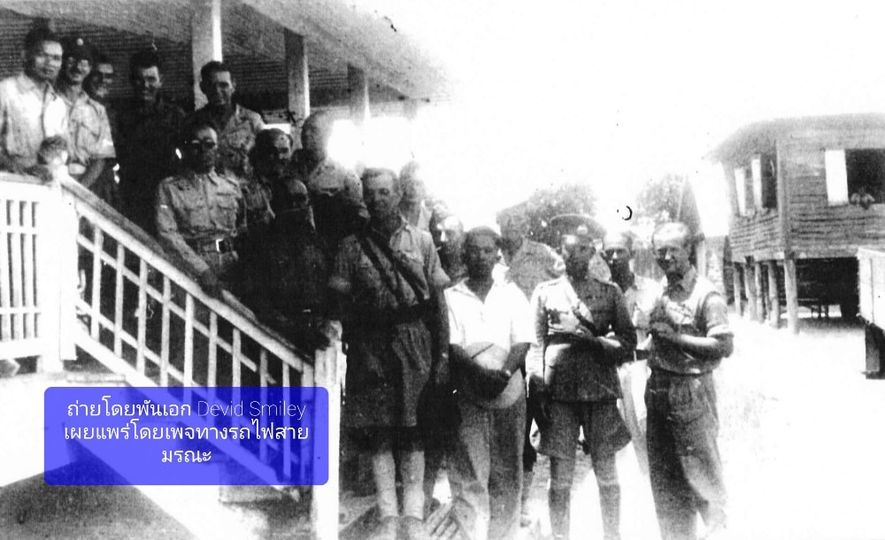
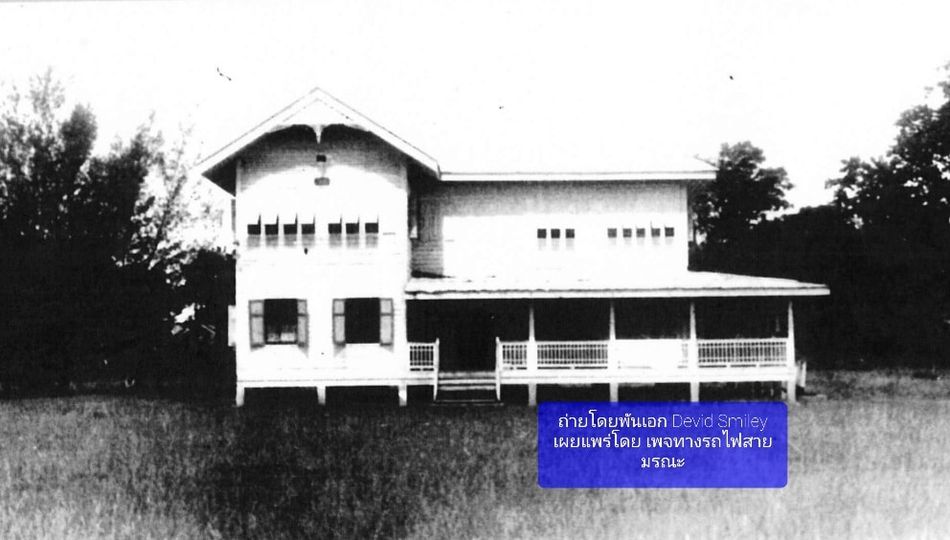
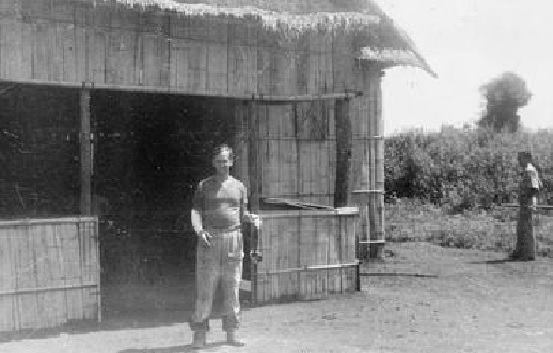
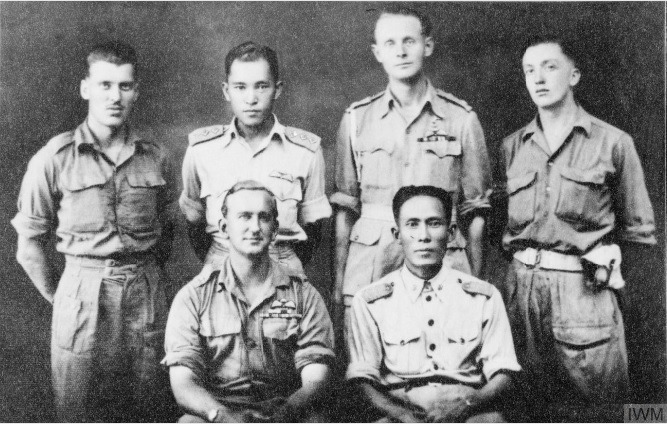
https://en.wikipedia.org/wiki/Free_Thai_Movement
http://www.insigne.org/OSS-Thai.htm
For more info on the OSS, Free Thai Movement (Seri Thai) and Flying Tiger POWs see:
